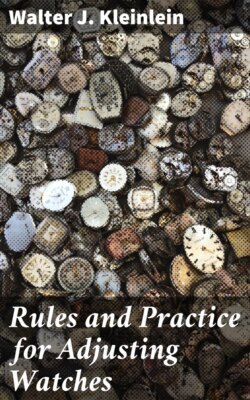Читать книгу Rules and Practice for Adjusting Watches - Walter J. Kleinlein - Страница 12
На сайте Литреса книга снята с продажи.
4.Tests and Experiments.
ОглавлениеIt is generally understood that the purpose of the compensation balance is to act in opposition to the error caused principally by the hairspring. The steel hairspring having no compensating qualities, either grows stronger or weaker with changes in temperature. When it becomes longer, wider and thicker in heat, experiments seem to prove that the increased width and thickness are not in proportion to the increased length, for if they were, the spring would actually be stronger; while timing proves that it is weaker because of the loss in time. In cold the shortening factor seems to dominate because of a gain in time.
In a series of tests with steel springs on uncut steel brass balances, the temperature error in the extremes of 40 degrees and 90 degrees Fahrenheit was found to be from eighty to one hundred and sixty seconds. With the same balances cut the error was reduced from seventy to one hundred and thirty seconds in each instance, without any correction of the balance screws.
A former test with palladium springs on the same balances, previous to having been cut, showed a considerably reduced error, indicating that the steel springs were mainly responsible for the temperature variations.
The above tests were in actual practice and results are given as noted, regardless of scientific or established formula relating to the cubic measurement of metals in changes of temperature.
